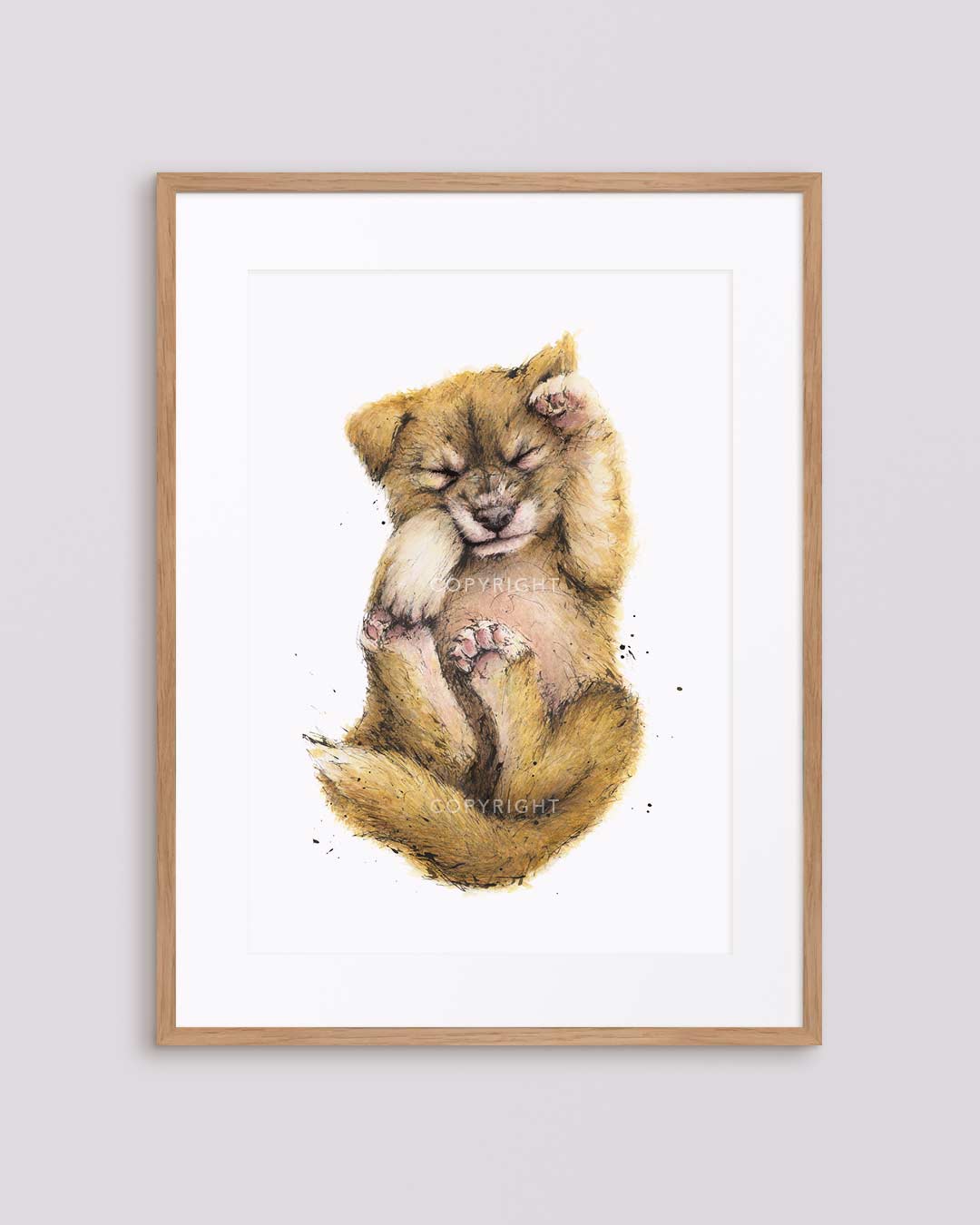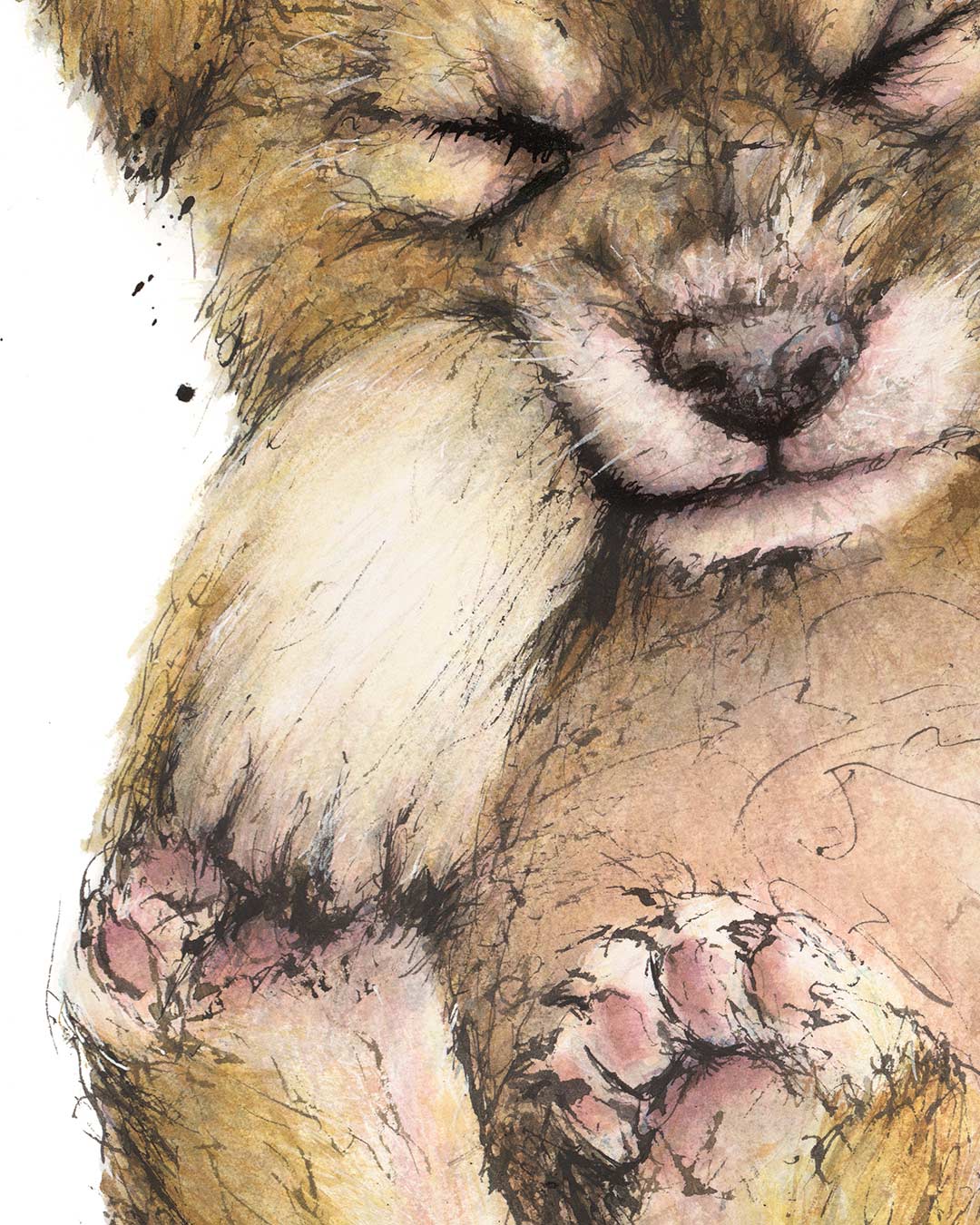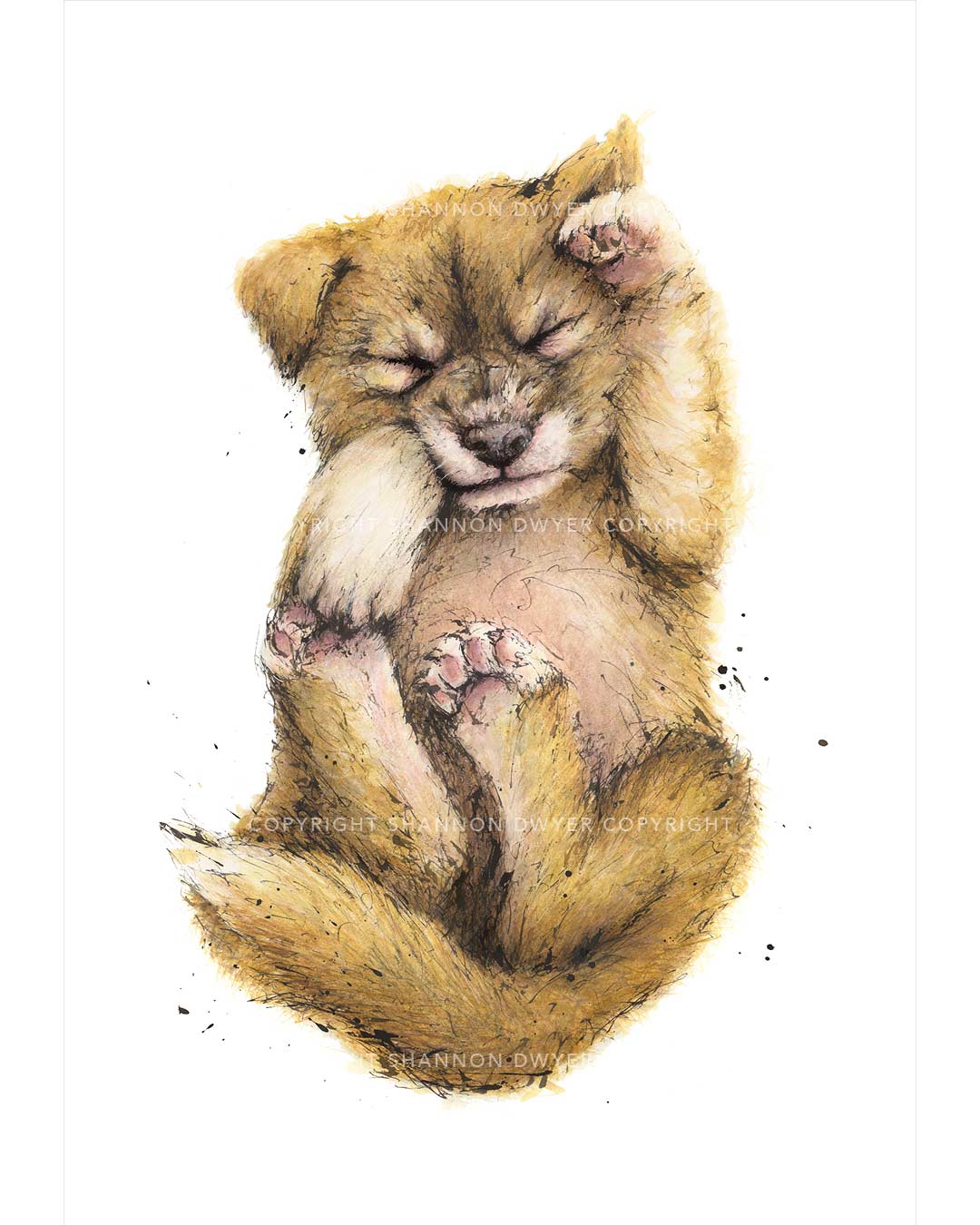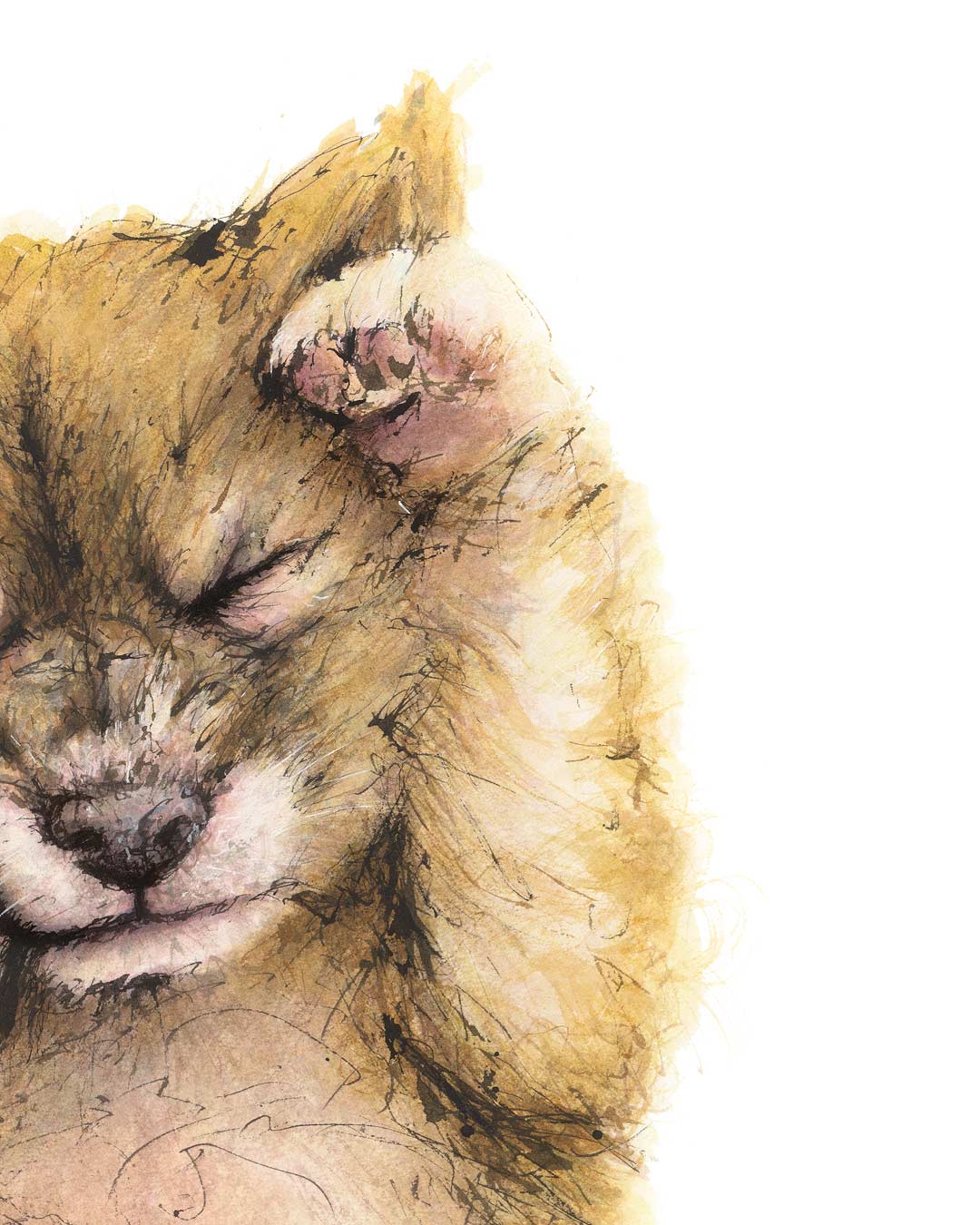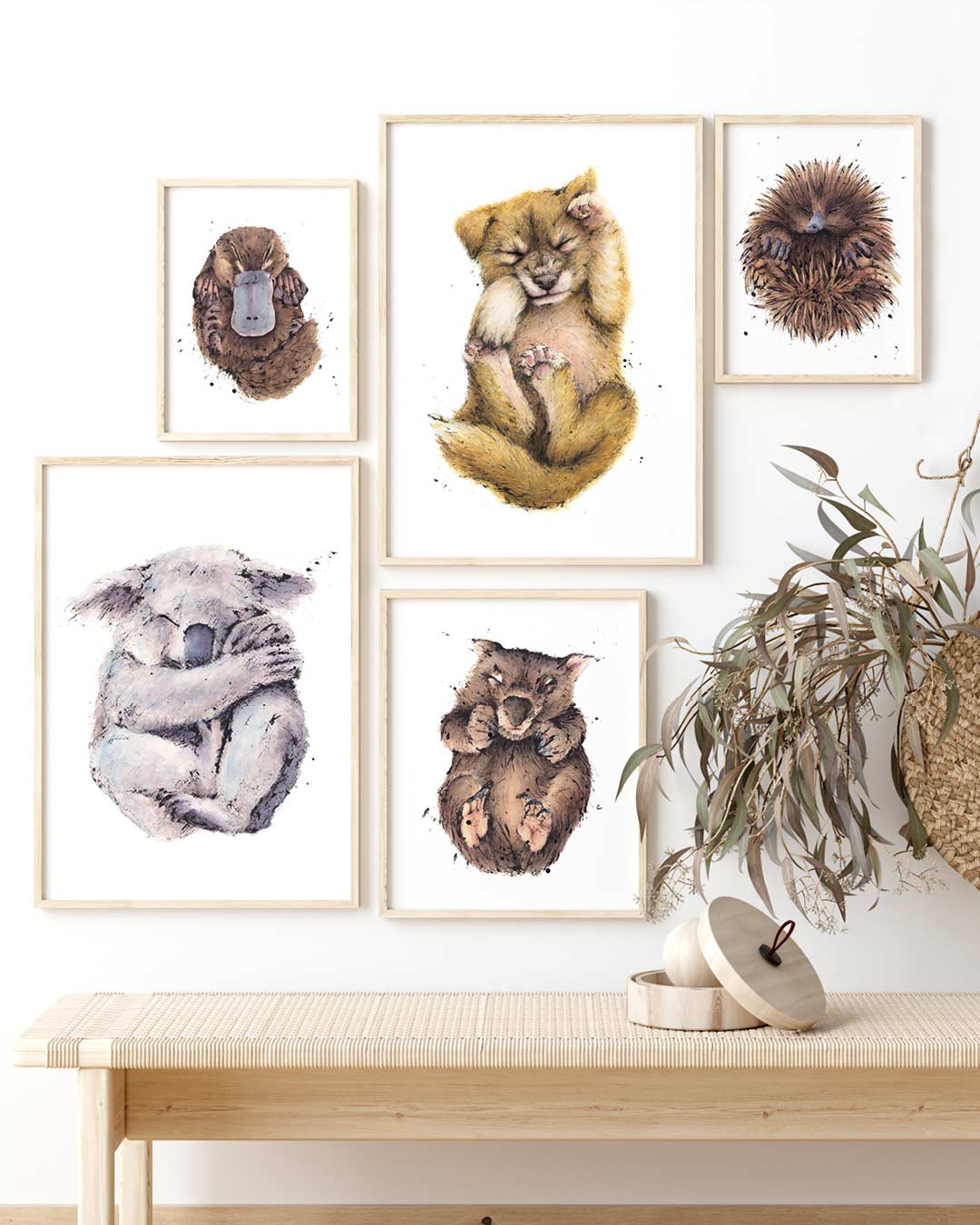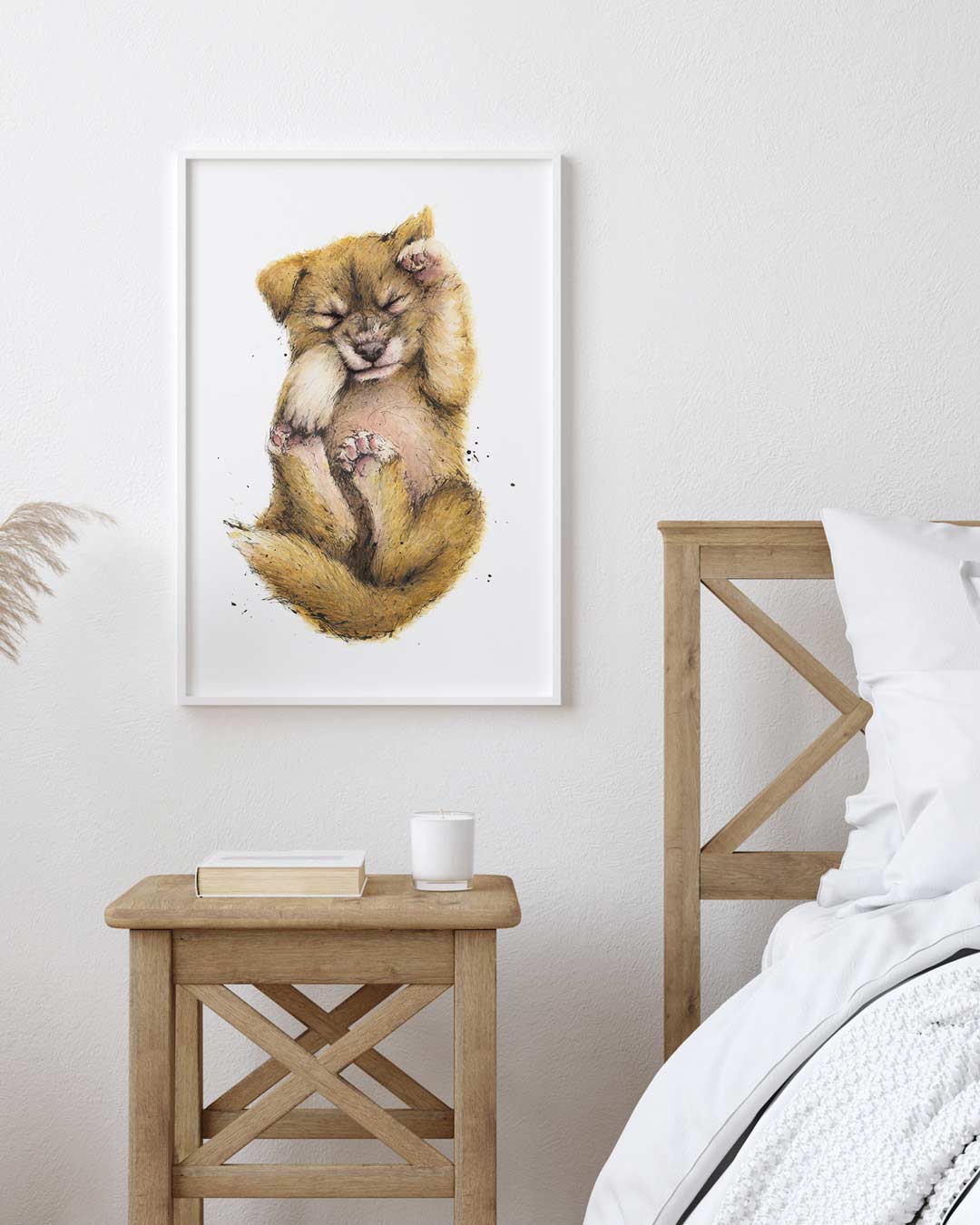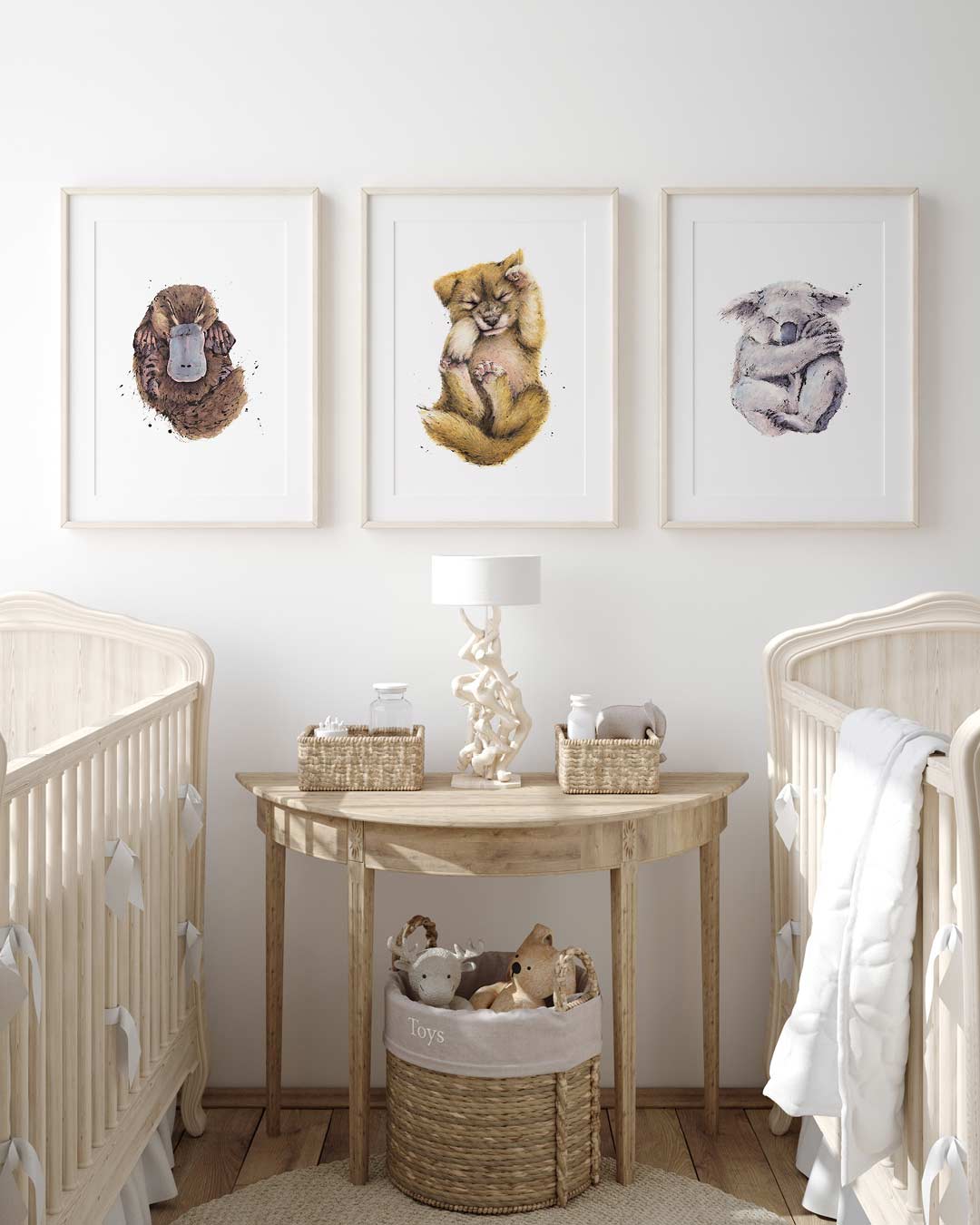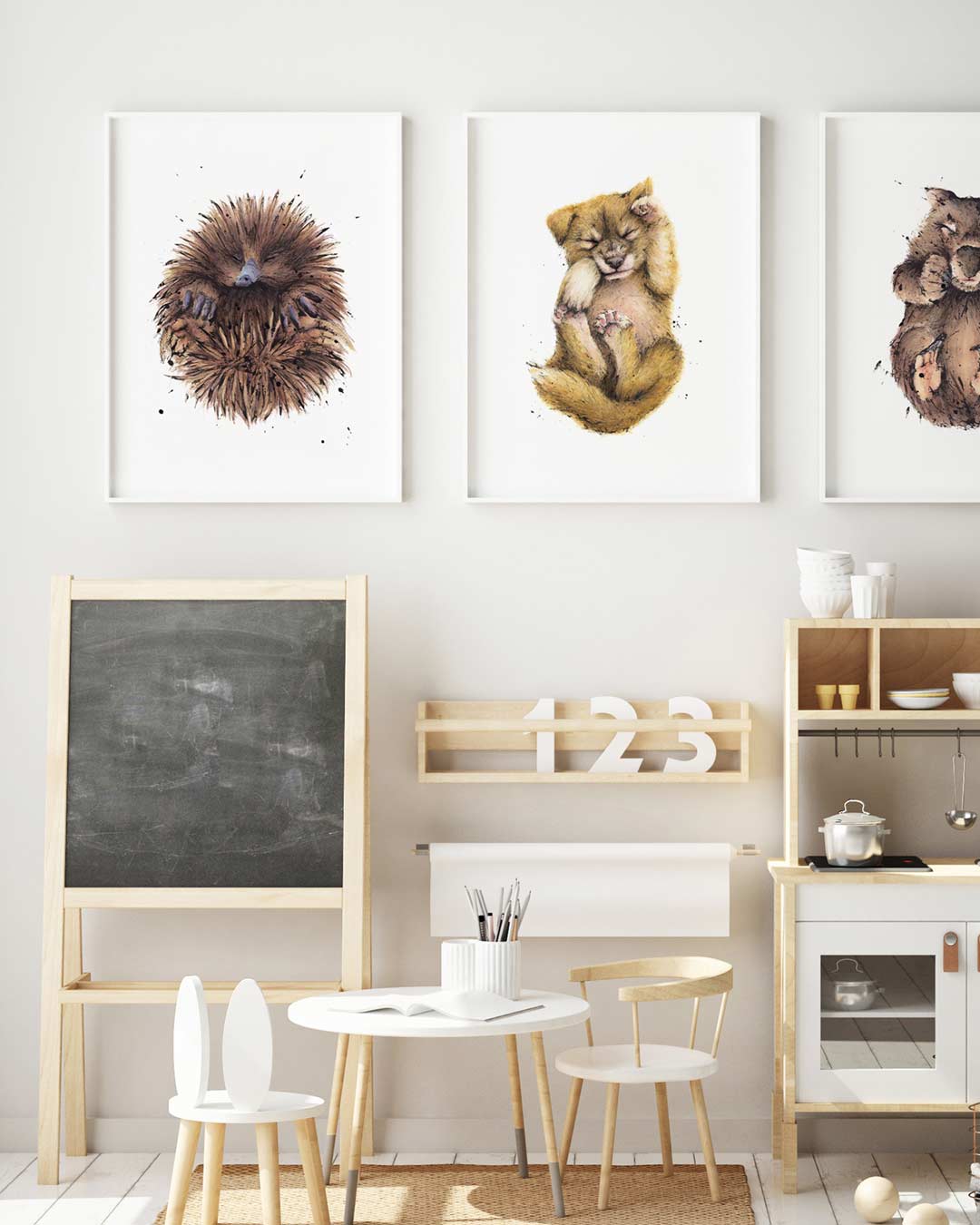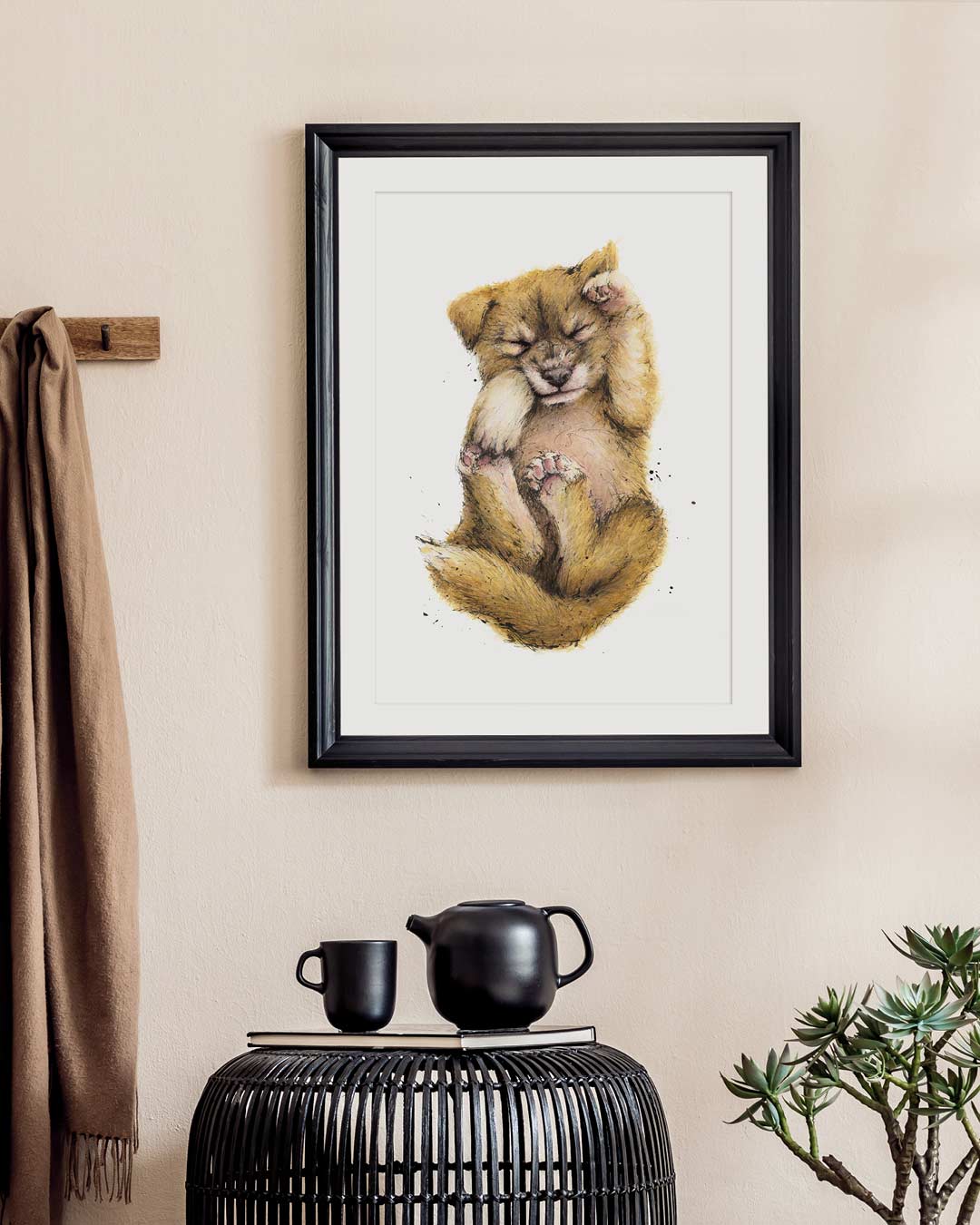Shannon Dwyer Artist
Fine Art Giclée Print
Couldn't load pickup availability
Curled into a soft little bundle, the artwork was created using a mix of watercolours and ink, with warm tones of sandy browns, golds and soft creams layered against gentle washes of purples and blues. These colours echo the dingo’s place in the Australian landscape – both resilient and deeply connected to the land.
This piece captures the tender, fragile side of a species often seen for its strength and adaptability, highlighting the innocence and charm of a young dingo at rest. Perfect for lovers of Australian wildlife, it’s a gentle reminder of the beauty, vulnerability and uniqueness of our native animals.
Fun Facts about this Animal:
The Dingo is a lean, wild canine found in varied habitats of arid deserts, open grasslands, coastal forests and even alpine regions throughout mainland Australia. Unlike domestic dogs, dingoes are highly independent and often roam alone and/or form small packs. They are opportunistic hunters, feeding on a wide range of animals including rabbits, kangaroos, rodents, birds and reptiles. Dingoes are curious and clever, known for their ability to solve problems and adapt to their environment – some have even learned to open gates or climb fences! They rarely bark, instead using howls, growls and other vocalisations to communicate. They've played a huge role in the culture of First Nation Aborigines, having lived alongside each other for thousands of years, often sharing campsites, sleeping near fires and even helping keep watch at night – with some tribes viewing the dingo as a kin or 'totem animal', meaning they are spiritually linked and may not be hunted or harmed. One of the biggest challenges Dingoes face today is hybridisation with introduced domestic/wild dogs, which threatens the purity of the species. They also often come into conflict with farmers due to livestock predation and despite being protected in some areas, they are killed/culled in others, leading to mixed 'conservation efforts' across the country. Maintaining healthy dingo populations is important for the balance of Australia's fragile ecosystems, especially as they play a key role in controlling overabundant species like feral cats/foxes. Conservation Status: Vulnerable to extinction.
For more detailed information, see below drop-down bars.
This artwork is available in a range of standard 'A paper' sizes (see examples shown below).
Share
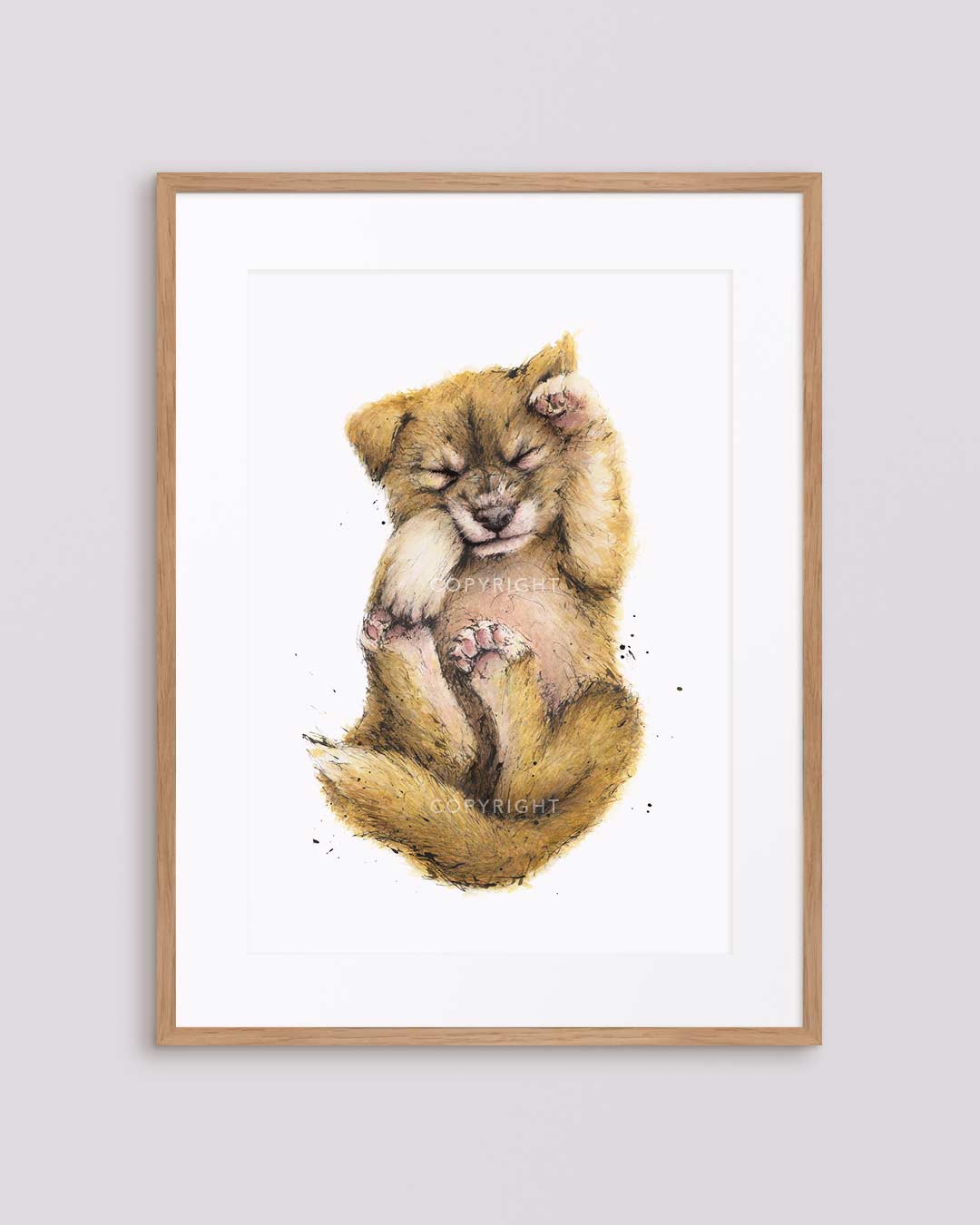



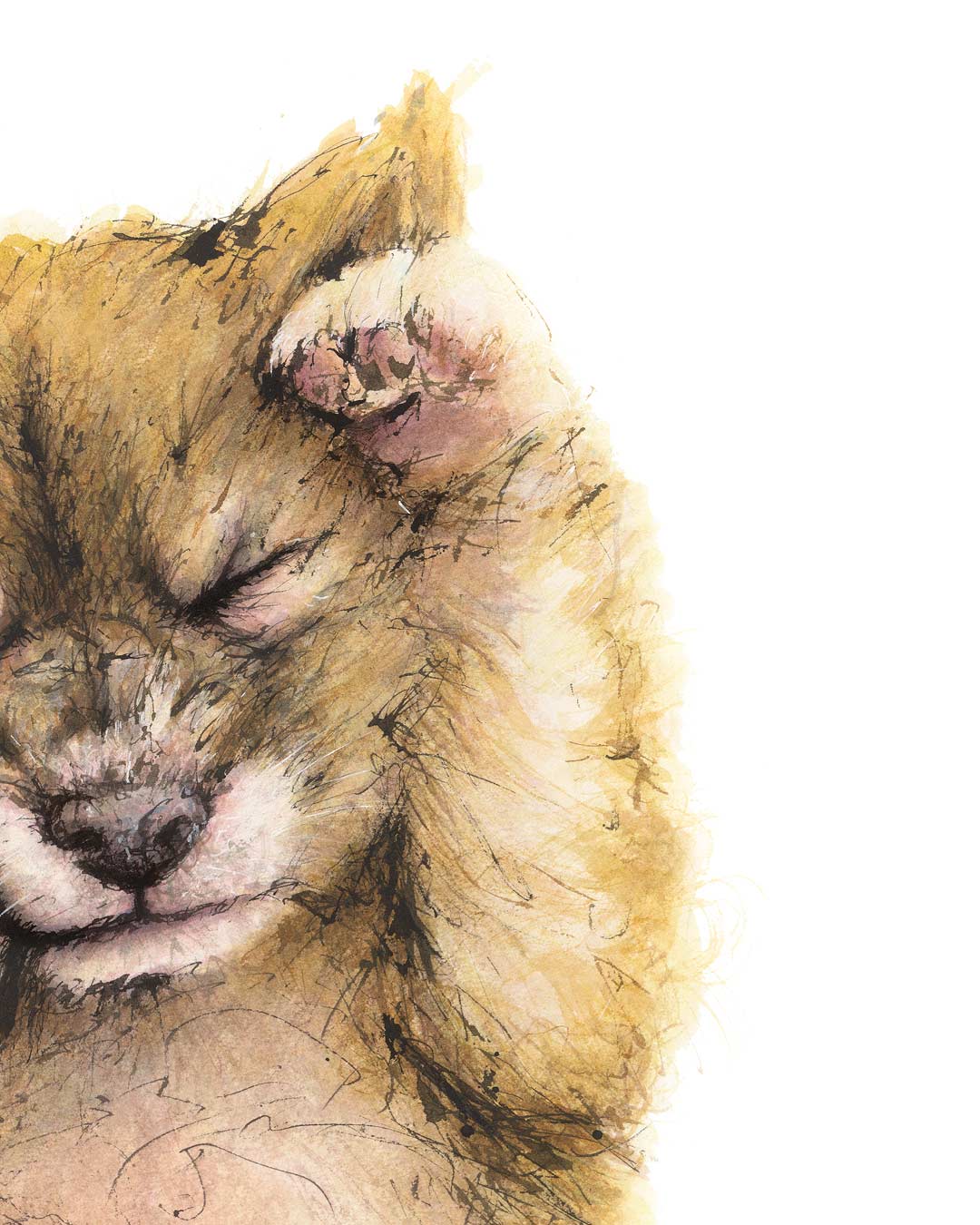
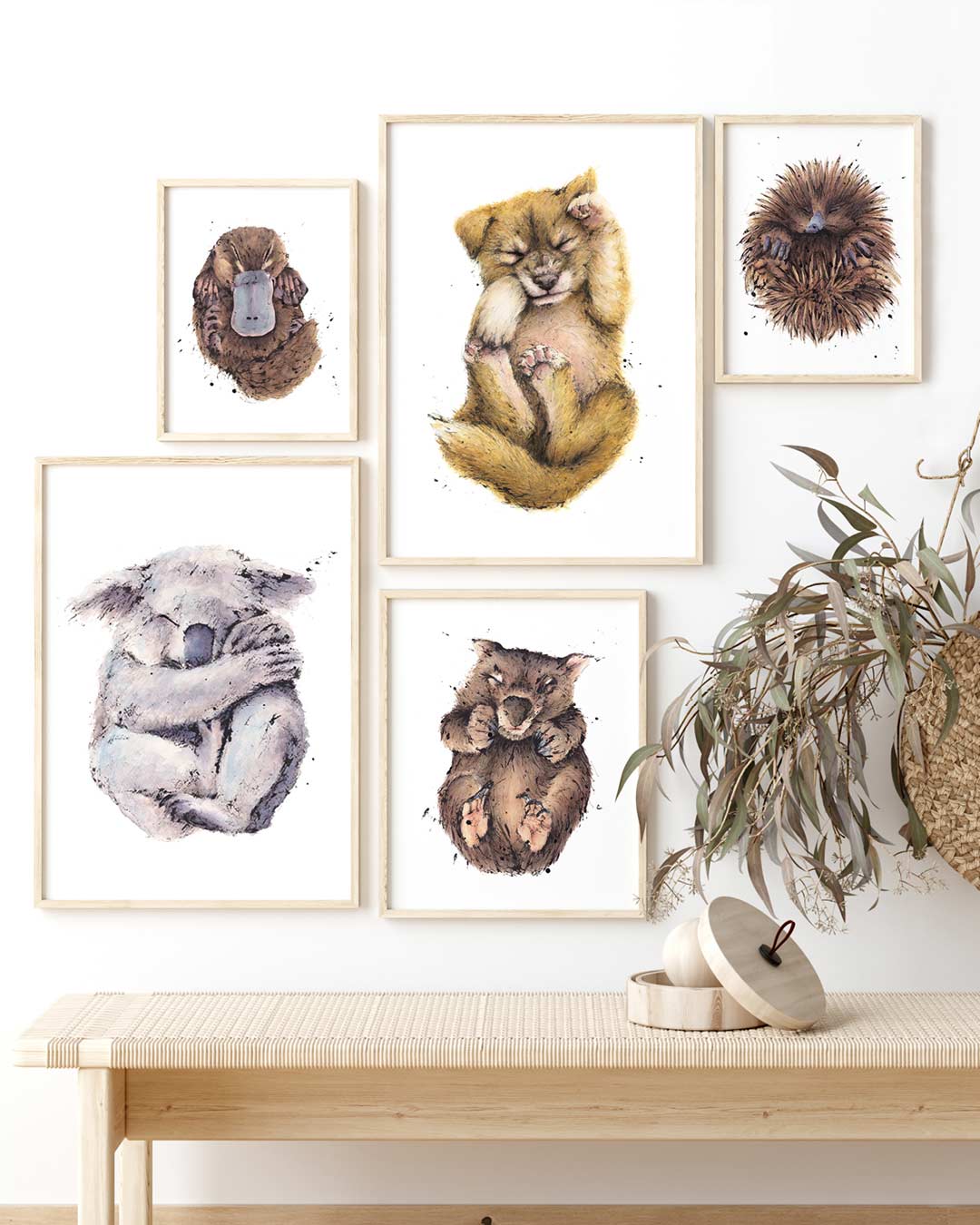
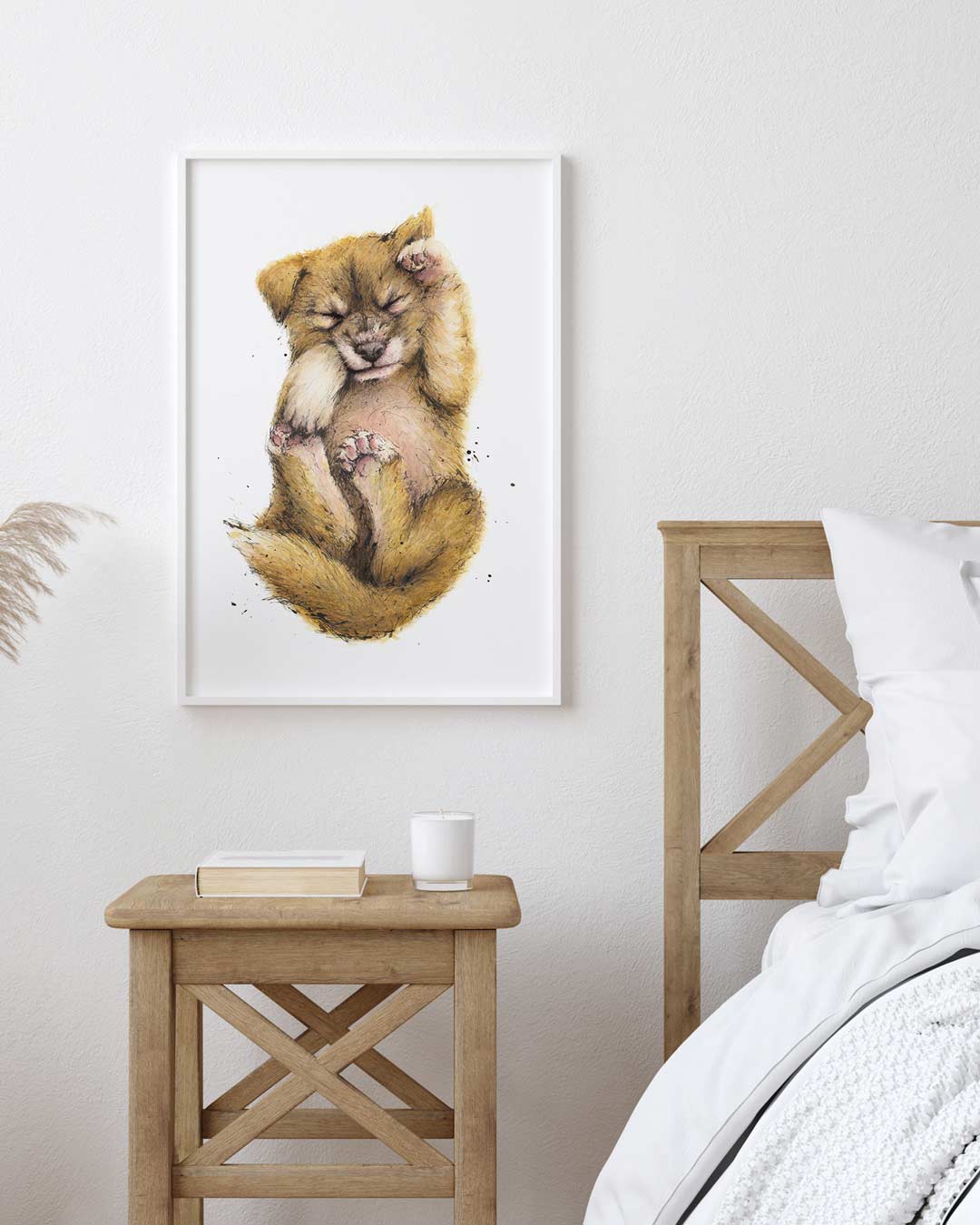
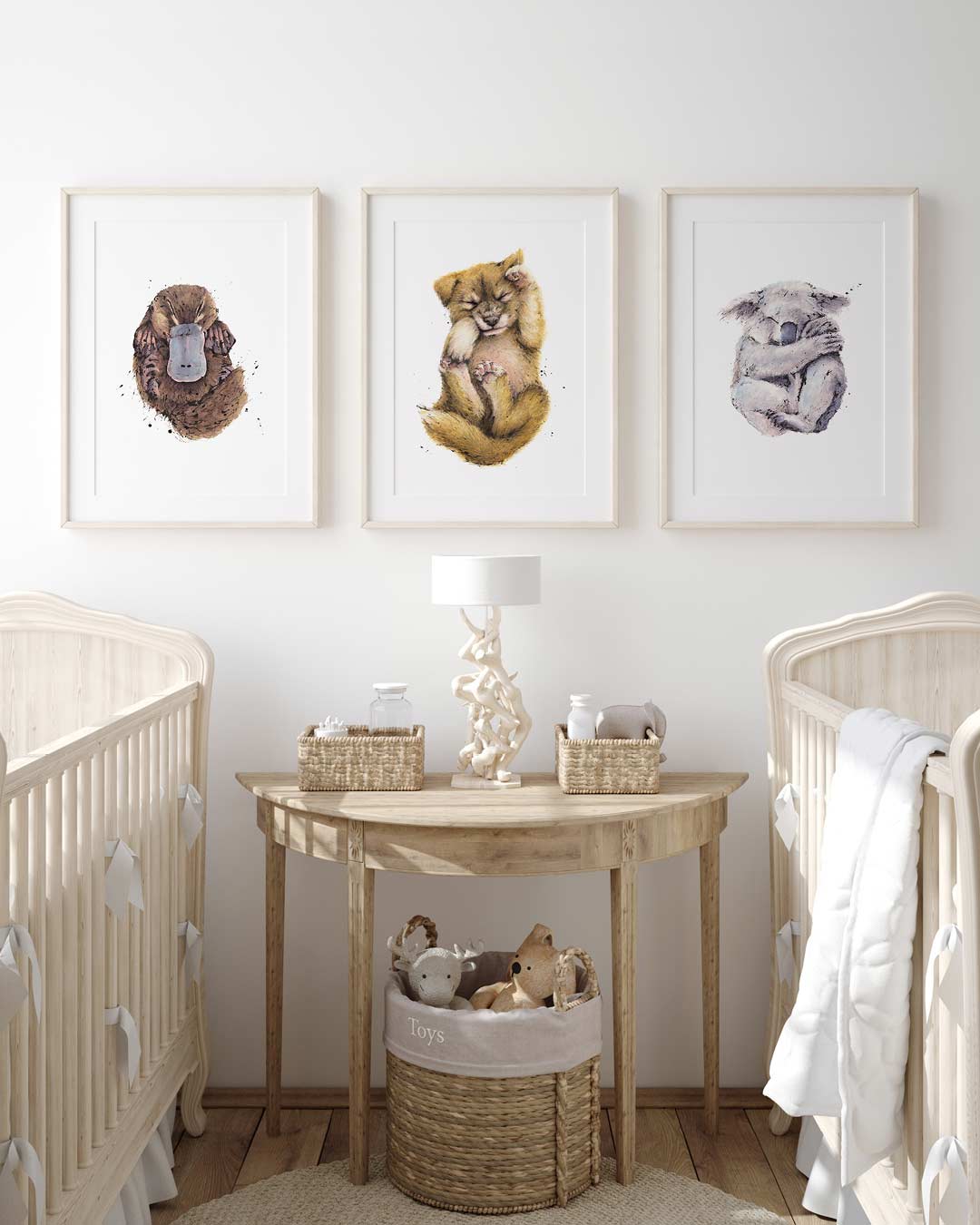
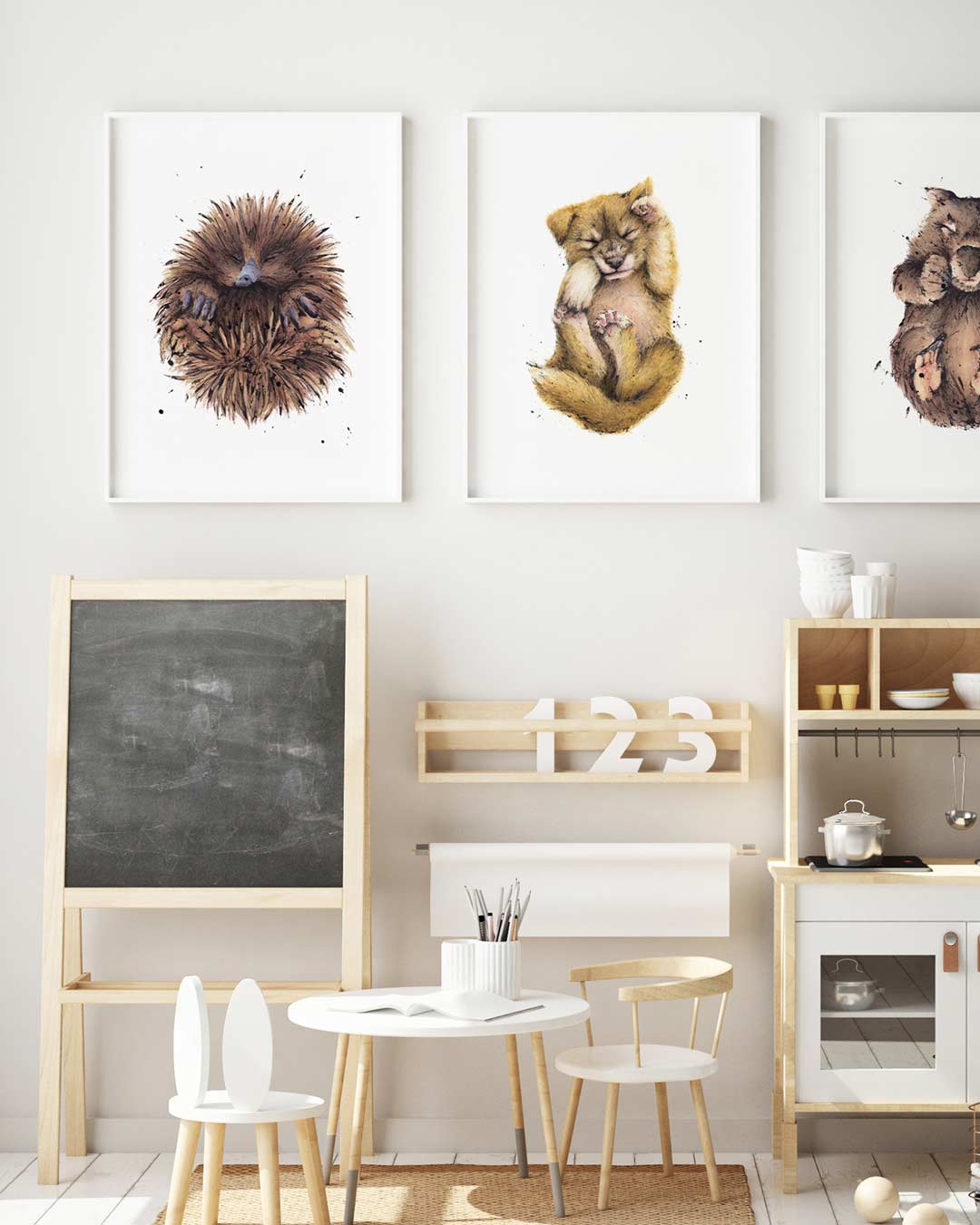


Each fine art giclée print is hand-signed by Shannon.
All Prints are made from an original painting that has been professionally ‘captured’ to ensure all of its finer details remain - including the beautifully subtle texture in the paper.
Each fine art giclée print is hand-signed by Shannon.
All Prints are made from an original painting that has been professionally ‘captured’ to ensure all of its finer details remain - including the beautifully subtle texture in the paper.

Paper: Premium-grade bright white 315gsm acid-free paper, with a beautifully subtle textured finish using
Inks: Printed with archival pigment inks.
Prints may be posted flat or rolled in acid-free tissue paper, within a postage tube.
Custom sizing available on request.
What is a Giclée?
Giclée is a printing process using high-quality digital files, archival-grade pigments and acid free media resulting in a fade-free image which achieves a seemingly “dot-less” imaging technology (which varies from traditional fine art printing which typically relies on screen pattern dots to reproduce full-range colour halftones). The Giclée process enables reproduction on virtually the same media as the original artwork.
Paper: Premium-grade bright white 315gsm acid-free paper, with a beautifully subtle textured finish using
Inks: Printed with archival pigment inks.
Prints may be posted flat or rolled in acid-free tissue paper, within a postage tube.
Custom sizing available on request.
What is a Giclée?
Giclée is a printing process using high-quality digital files, archival-grade pigments and acid free media resulting in a fade-free image which achieves a seemingly “dot-less” imaging technology (which varies from traditional fine art printing which typically relies on screen pattern dots to reproduce full-range colour halftones). The Giclée process enables reproduction on virtually the same media as the original artwork.
